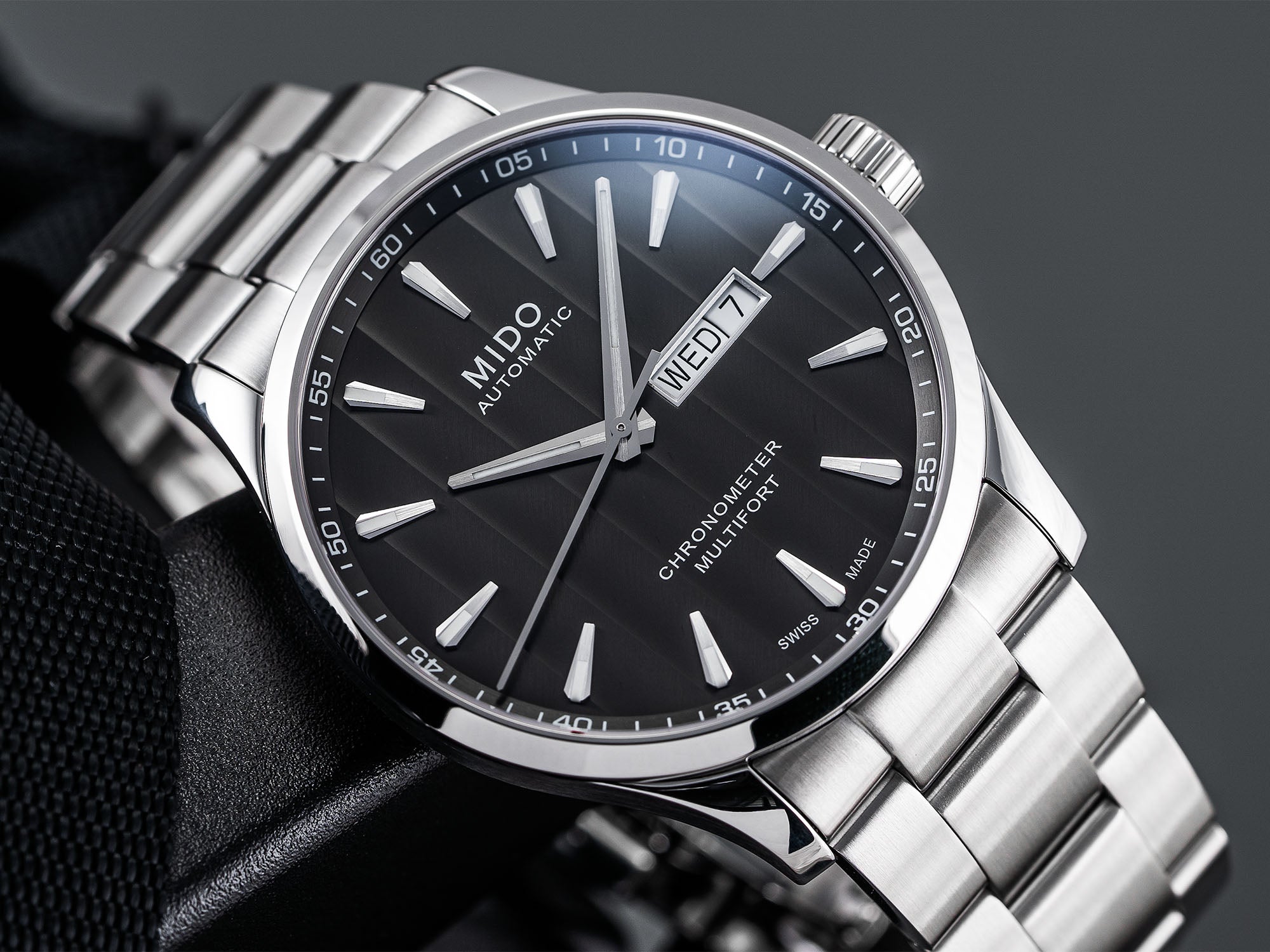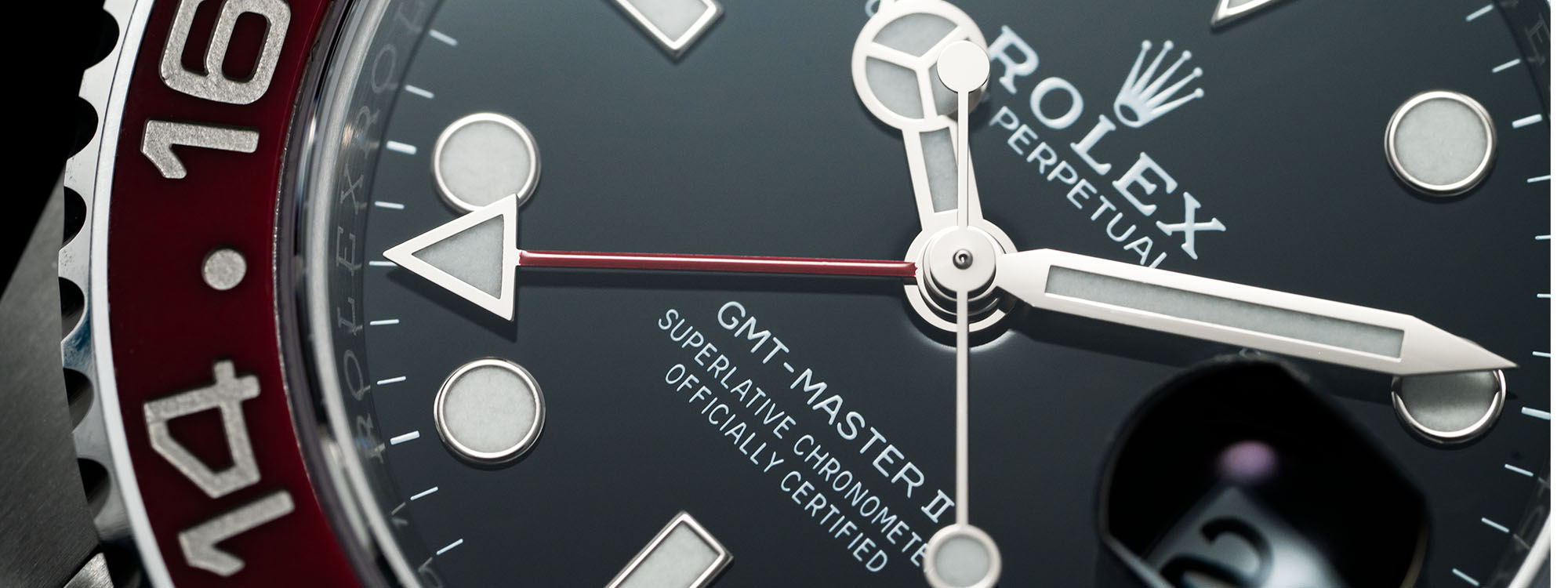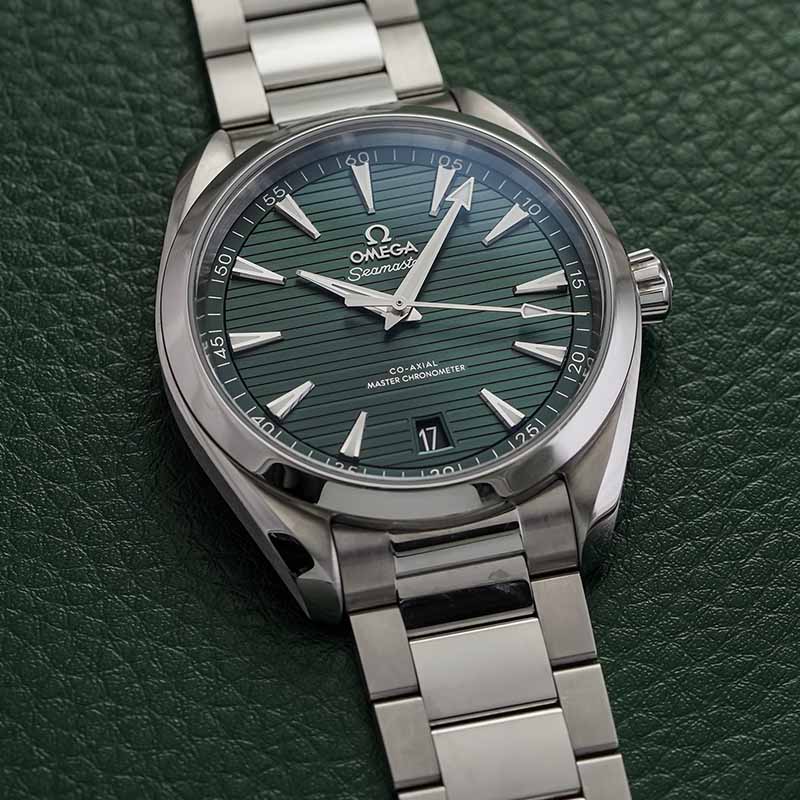When a watch touts on its dial that it is a "Chronometer" or an "Officially Certified Chronometer" or even a "Superlative Chronometer," what exactly does that mean? How does a chronometer watch differ from a watch that does not make that claim? For that matter, a newbie to the timepiece game might ask, what is the difference between a watch with "chronometer" on the dial and a watch with "chronograph" on the dial? In this comprehensive guide, we attempt to answer all of your burning questions about chronometer watches and what sets them apart.
[toc-section heading="The Chronometer Throughout History"]

Our original, classical definition of a chronometer can be traced back to the golden age of seafaring exploration in the 18th Century, when ships required the use of a highly accurate onboard clock that enabled their navigators to determine longitude in order to avoid the perils of running aground or veering hopelessly off course. The man credited with developing the first of these “marine chronometers” was legendary British watchmaker John Harrison; his invention facilitated the celestial navigation used at the time by navigators at sea to determine their ship’s position in coordination with a sextant. Marine chronometers, which were essentially highly accurate clocks mounted on gimbals inside wooden boxes, were among the first portable timepieces and were instrumental in the global seagoing trade that helped build our modern, interconnected world. Ulysse Nardin, founded by its eponym in 1846 in Le Locle, Switzerland, was one of the most prolific and prestigious makers of marine chronometers (as above), supplying them to navies throughout the world, including those of the United States and Great Britain. Today it is one of several watch manufacturers that make wristwatches that adopt the historical look of a marine chronometer.

The term “chronometer” took on a slightly broader meaning as personal, portable timekeeping, as represented by pocket watches and later by wristwatches, became mainstream. Watchmakers focused on the task of optimizing their timepieces’ precision and submitted their proudest accomplishments in the field to “chronometer competitions” — tests conducted at facilities like Switzerland’s Neuchâtel Observatory and London’s Kew Observatory — throughout the late 19th to mid-20th Century. Zenith, with 2,330 chronometry prizes for accuracy, holds the record for the most historical accolades at these Observatory Trials, which were gradually phased out as the quartz watch became ascendant in the 1970s; they were essentially replaced by the formation of the non-profit agency COSC, more on which below.
[toc-section heading="Chronometer vs. Chronograph"]

When addressing the topic of chronometers to someone very new to watch appreciation, one of the first hurdles to clear is the clarification of two very common terms used in the world of timepieces: Chronometer and Chronograph. Quite simply, a chronometer (from the Greek chronos, meaning time, and meter, meaning measure) is any watch or clock that keeps reliably accurate time, usually as determined by an outside independent testing agency, whereas a chronograph (from chronos and graph, i.e., to “write time”) is any watch or clock with the ability to track and record intervals of time, aka a stopwatch. The terms are not interchangeable but they are also not mutually exclusive: a watch equipped with chronograph functions can also be a chronometer if it has met a set of criteria for precision and accuracy predetermined by its manufacturer, and a watch with “Chronometer” as part of its name can also be a chronograph if it can perform those time-measuring functions. Iconic chronograph watches like the Rolex Daytona, Omega Speedmaster, and Breitling Navitimer are all chronometers — albeit each earning their chronometer certification from a different set of tested criteria. Below are descriptions of all the major chronometer testing regimens, along with some examples of watches that adhere to their standards.
[toc-section heading="COSC - Swiss Chronometer Standard"]
The Contrôle officiel suisse des Chronomètres (Official Swiss Chronometer Testing Institute, aka COSC) was founded in 1973 as the organization responsible for testing Swiss-made watches for accuracy and precision in order to certify them as chronometers according to the international ISO 3159 standard. A COSC certification remains the baseline standard for an “official” chronometer watch, though several other testing regimens and certifications (as delineated below) have since developed stricter criteria and narrower tolerances.

COSC evaluates uncased movements — not complete watches — which are sent to one of three labs across Switzerland, where over a period of 15 days they undergo a series of tests to determine seven separate criteria: average daily rate, mean variation in rate, greatest variation in rate, difference in rates in horizontal and vertical positions, largest variation in rate, and variation in rate depending on temperature and rate resumption. Each day, every movement is tested in several different positions, in a temperature-controlled enclosure at 23º Celsius (73.4º Fahrenheit). The maximum average daily rate deviation for a mechanical movement to obtain a COSC chronometer certificate is -4/+6 seconds; for a quartz movement — which COSC tests for 13 days rather than 15, in only one position and at several different temperatures and humidity levels — the maximum is +/- 0.07 seconds per day.

More than a million Swiss watches earn COSC chronometer certification every year, a number that still represents less than 10 percent of Swiss watches exported per year, Only about 21 percent of Swiss mechanical watches exported per year are COSC-certified. While numbers obviously vary from year to year, the list of watch brands that send the most watches per annum to COSC for testing and certification is relatively consistent, and at the topmost level, likely not surprising: luxury giants Rolex, Omega, and Breitling in the first three spots, with mass-market powerhouse Tissot at no. 4 and relatively under-the-radar Mido (above) — small in the U.S.A., but huge in Latin America — at no. 5. Filling out the rest of the top 10 in recent years have been the likes of Tudor, Chopard, Zenith, Panerai, and (somewhat surprisingly) Bremont. A number of these manufacturers have also instituted their own in-house chronometer certifications; most are listed below.
[toc-section heading="German Chronometer Standard DIN 8319"]

German-made watches have garnered their own enthusiastic fan base and their own reputation for robustness and chronometric reliability, but since they’re not Swiss (even though many contain Swiss-made movements), they’re not eligible for COSC certification. Fortunately, Germany has established its own chronometer standard under DIN 8319, whose specifications are equivalent to those of the ISO 3159 parameters adhered to by COSC. Wempe, the German watch-and-jewelry retailer and watchmaker, has been testing watches for chronometric accuracy at the Glashütte Observatory in the state of Saxony, the center of traditional German watchmaking, since 2006. As with watches sent to COSC, the Glashütte Observatory testing regimen spans a 15-day period, with the same parameters for certification as COSC’s, but is more stringent in two regards: all movements tested must be equipped with a stop-seconds function and unlike at COSC they are tested while fully assembled inside their case. Glashütte Original’s Senator Chronometer (above) is an example of a German-made luxury watch with an Observatory chronometer certification, and its dial even adopts the historical layout of a marine chronometer.
[toc-section heading="Superlative Chronometer - Rolex"]

Year after year, Rolex accounts for about one third of all COSC chronometer certificates, but in 2015, the mega-brand's “Superlative Chronometer” designation, which it has long applied to the dials of sport-luxury icons like the Daytona, Submariner, and GMT-Master (above), was updated in 2015 with criteria twice as stringent as those required for COSC certification. Nowadays, a “Superlative Chronometer” is defined by Rolex as a watch with an average daily rate variation of a very precise -2/+2 seconds per day as well as a host of other attributes. Rolex tests COSC-approved, fully assembled watches in its own laboratories in the areas of Precision (the aforementioned -2/+2 rate variation), Power Reserve (according to the stated specs), Waterproofness (10 percent extra safety margin for watches rated at 100 meters, 25 percent extra for divers’ watches rated to 300 meters and above), and Self-Winding (ensuring the perpetual rotor operates with no friction or other obstructions). As the maker of the first watch to receive an official chronometer certificate in 1910, Rolex’s dedication to improving chronometric standards is not surprising.
[toc-section heading="Master Chronometer/METAS - Omega, Tudor"]

Omega introduced its Constellation Globemaster, the first timepiece branded with the “Master Chronometer” designation, in 2015. Watches with this accolade — which now comprise the lion’s share of Omega's output — have not only aced the tests required for COSC chronometer certification but have been subjected to another, even more thorough battery of tests by the Swiss Institute of Metrology, or METAS. The certification was first applied to the Globemaster’s Caliber 8900 and has been expanded to many Omega calibers since then. To meet the METAS standard for a Master Chronometer, the movement is subjected to eight specific tests that evaluate the following: functionality of both movement and watch during exposures to magnetic fields of 15,000 gauss; deviation of running time in six positions; deviation of running time at different levels of power reserve; deviation of average daily rate variation under the 15,000 gauss magnetic field; average daily precision at six different positions and two different temperatures; power reserve; and water resistance of the fully cased watch.

Essentially, it’s the resistance to magnetism that sets Master Chronometer certification apart from the rest: a watch that earns the badge must maintain a variation of zero to +5 seconds per day both during and after exposure to the 15,000 gauss magnetic field. And while this certification is associated almost exclusively with Omega (like the use of a co-axial escapement, a technical innovation it has mostly cornered the market on since 1999), other watchmakers are free to submit timepieces to METAS as well; the most recent one to do so is Tudor, whose Black Bay Ceramic model (above) was outfitted with a certified Master Chronometer caliber in 2021.
[toc-section heading="Grand Seiko Special Standard"]

Not to be outdone by the Swiss or Germans, Japan’s Grand Seiko introduced its own “Grand Seiko Special Standard” for chronometric performance in 1996 and updated it in 1998 to the one it still applies to its luxury timepieces today. To earn the distinction, uncased movements undergo a 17-day test (longer than the 15-day COSC period), in six different positions and at three different temperatures, to achieve a mean daily rate variation of +4/-2 seconds and a maximum daily rate variation of 3 seconds. (The slightly less strict “Grand Seiko Standard” allows for +5/3 seconds and a 4-second maximum daily variation.)
[toc-section heading="Qualité Fleurier Standard - Chopard, Parmigiani"]

The Fleurier Quality Foundation (FQF), headquartered in the historic Town Hall building of the Swiss town of Fleurier, was established in 2001 and began granting official certifications in September 2004. To obtain FQF certification, a watch must meet five conditions, including being 100 percent manufactured in Switzerland and to have already met the criteria for COSC chronometer certification when it arrives at FQF headquarters for testing. Additionally, and separating it from other sets of chronometer criteria, each submitted movement must demonstrate a specifically defined level of high-horology finishing — decorations must be visible on certain parts, other parts must be polished or beveled, et cetera. Each must also pass the FQF “chronofiable” test for shock-resistance, magnetic-field protection, water resistance and other criteria. Finally, the finished watch must pass a 24-hour operating test on the so-called Fleuritest simulator, which recreates the physical movements to which the watch would be subjected, ultimately finishing within a range of zero to +5 seconds per day for precision. The Fleurier-based watchmaking firms that joined to form the FQF also produce the majority of watches that receive its certification: Bovet, Parmigiani, Chopard, as well as movement-maker Vaucher.
[toc-section heading="Patek Philippe Seal"]

Luxury maison Patek Philippe has always marched to its own tune, and its Patek Philippe Seal, established in 2009, set a new standard not only for chronometric performance but for haute horlogerie decoration. “It is indisputable,” the brand announced at the launch of its in-house criteria, “that a hallmark of quality must apply to the whole watch. This fact called for a new seal that defines all competencies and features of relevance to the manufacture, precision, and lifelong maintenance of a Patek Philippe timepiece. The rules apply to all of the manufacture’s movements regardless of their complexity... it encompasses cases, dials, hands, pushers, spring bars for straps, etc., as well as the aesthetic and functional aspects of finished watches. Moreover, given that a Patek Philippe watch is first and foremost an instrument that measures time, the Patek Philippe Seal makes a binding statement regarding rate accuracy.” In summary, Patek tests all its movements to stricter precision tolerances than does COSC, with small variations in tolerance based on size: calibers with diameters of 20 mm or more must achieve accuracy within -3 and +2 seconds per day. Calibers with diameters smaller than 20 mm must meet a daily standard of -5/+4 seconds. Rate tests are performed in several phases of the manufacturing process, with the final tests conducted on fully assembled watches.

The Patek Philippe Seal replaces the Poinçon de Genève or Geneva Hallmark (seen above, lower right), a quality seal awarded solely to watches manufactured in the canton of Geneva by an independent organization that attests to the movement's elite level of finishing and decoration. Unlike a COSC certification, however, a Geneva Hallmark carries with it no technical requirement for accuracy or reliability, which is why it doesn't appear on this list. The Patek Philippe Seal, on the other hand, is envisioned as an indicator of both aesthetic beauty and technical excellence.

























































1 Comment
Great piece. very informative.